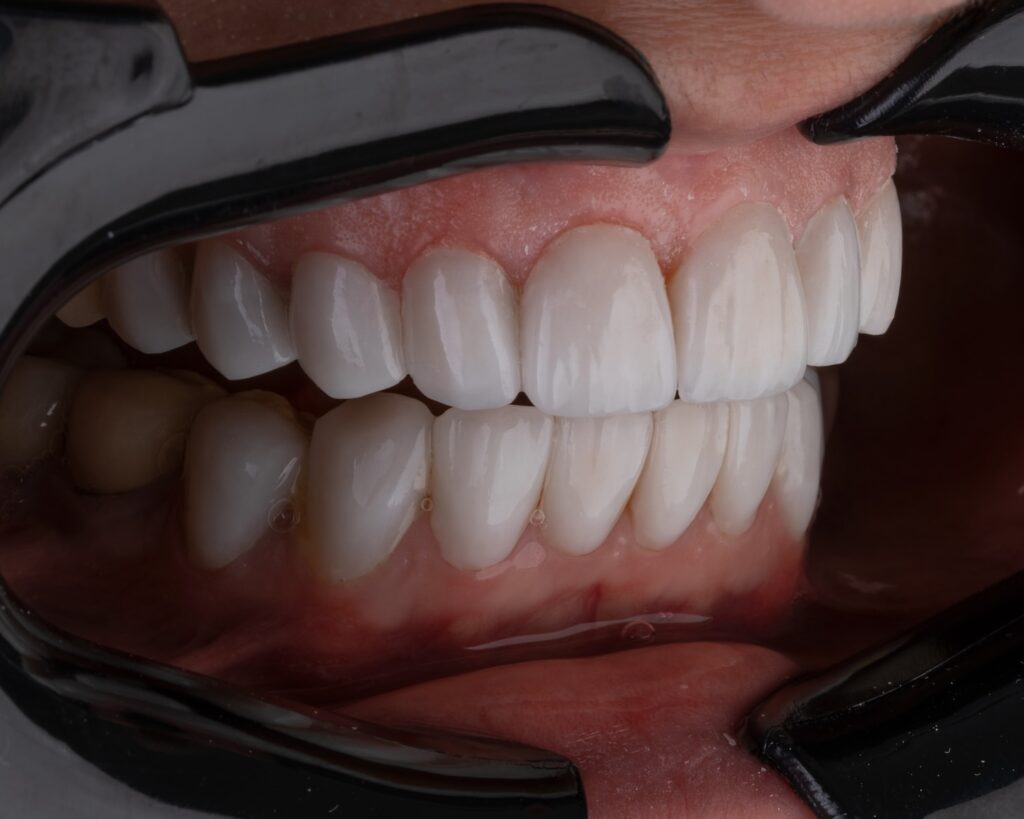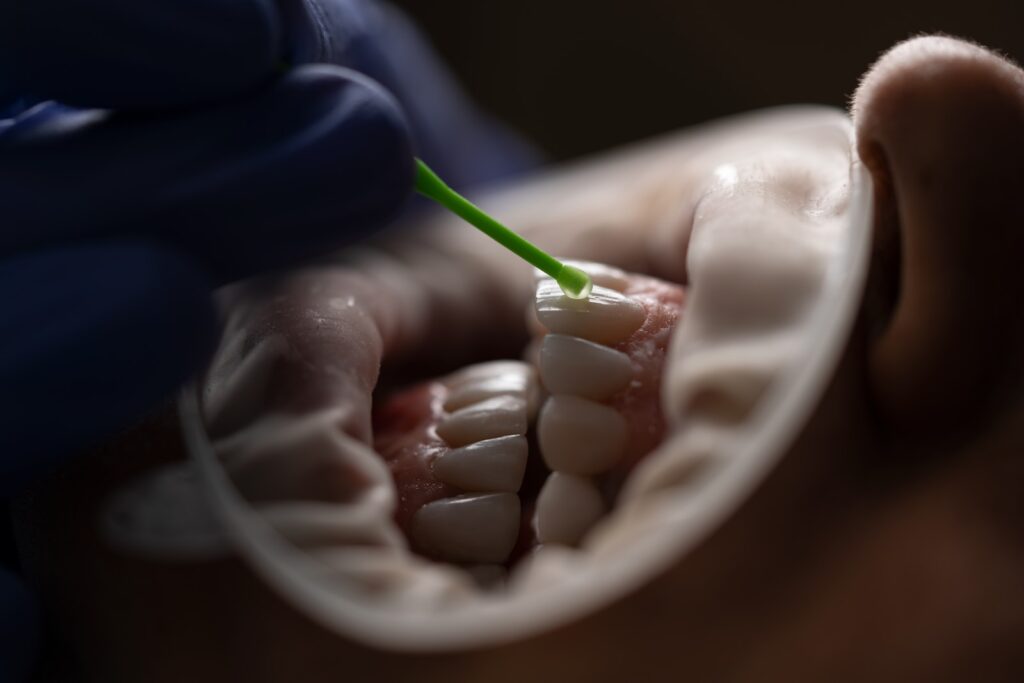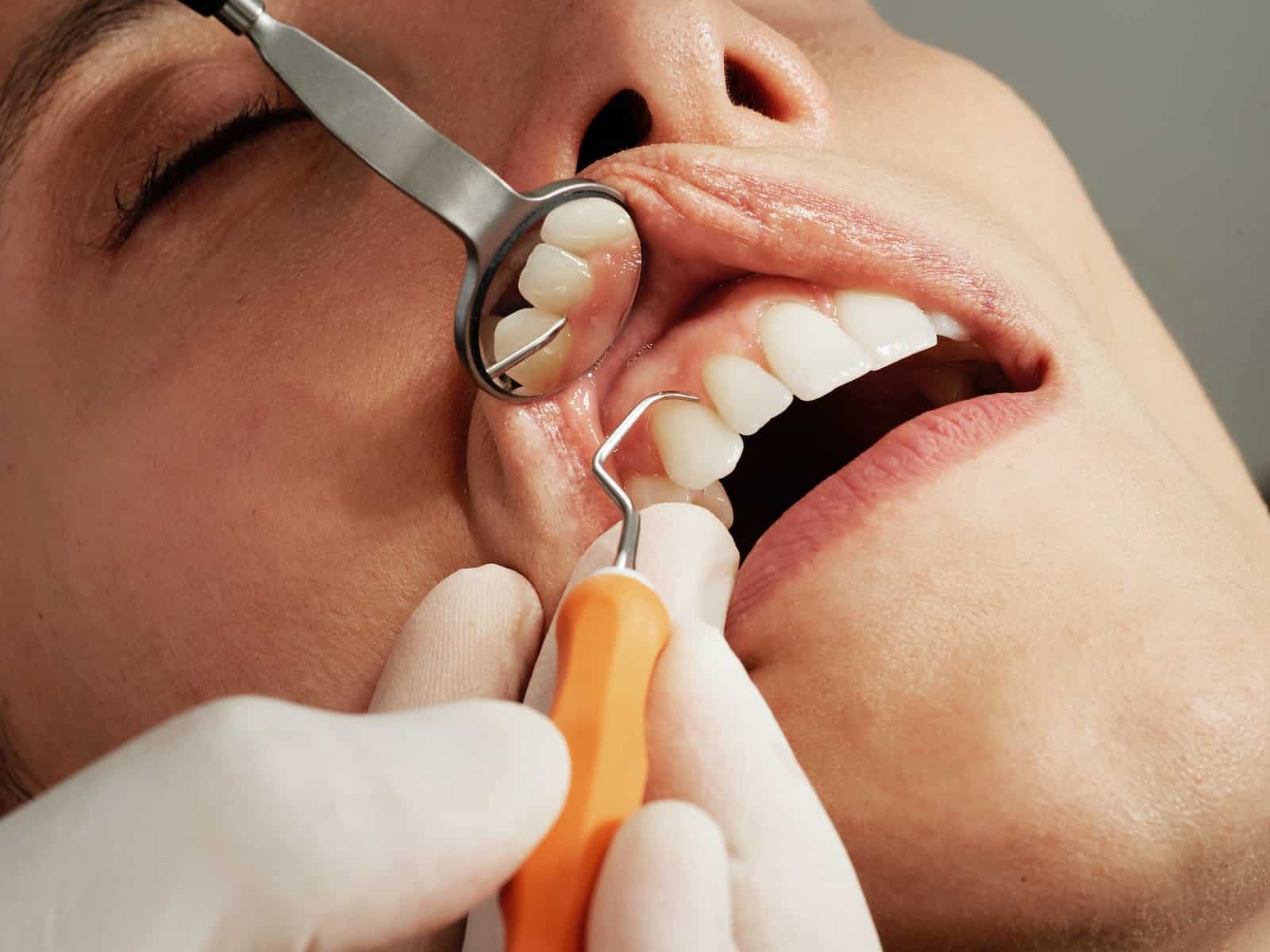What is Tartar (Dental Calculus)?
No less than 68% of adults in the US have tartar. It’s a common and often recurring problem. In itself, it’s nothing to worry about. As long as you have it removed regularly by a dentist, it shouldn’t lead to serious problems. Neglected tartar, however, can lead to some dental problems. What is tartar, what causes it, and can you do anything to prevent it?
In This Article:
- What is tartar (dental calculus)?
- The impact of tartar on dental health
- Prevention of the build-up of tartar
- Dental treatments for tartar removal
What is tartar (dental calculus)?
Tartar, or dental calculus, is a hardened form of dental plaque. It’s a common dental issue that can lead to more serious problems. There are ways to prevent it and you can get rid of it (well, a dentist can do that for you).
Tartar or plaque
Dental plaque is a soft, sticky film that builds up on your teeth after bacteria mix with saliva and food. This biofilm is usually transparent, white, or pale yellow. It’s something we all have on our teeth, it’s completely normal. It occurs mostly after you’ve eaten something. Brushing your teeth and/or flossing gets rid of it. This plaque layer contains more than 500 species of bacteria. Some of these bacteria are beneficial, others can be harmful.
If plaque isn’t removed regularly through proper oral hygiene practices, it can harden. This is when it turns into tartar. Unlike plaque, which is soft and sticky, tartar is a crusty deposit that’s firmly attached to the teeth. You can’t just remove it with a toothbrush. Tartar usually has a darker color and can only be removed by a dental professional.

What is the composition of tartar?
Tartar is primarily composed of two things:
- Dead bacteria
- A little bit of mineralized proteins from saliva
The minerals from your saliva, such as calcium phosphate, calcium carbonate, and magnesium phosphate, become incorporated into the plaque. This makes the tartar hard and strongly attaches it to the surfaces of your teeth.
How does plaque turn into tartar?
When plaque remains on your teeth for long periods, it merges with these minerals and eventually turns into tartar. The rough and hardened surface of tartar provides an ideal surface for further plaque formation. So once tartar exists on your teeth, the problem often multiplies. Eventually, this can compromise the health of your gums.
The timeline for tartar formation can vary from person to person, influenced by factors such as oral hygiene habits, diet, age, and genetics. However, the general timeline is as follows:
- 24 to 72 hours after eating – dental plaque, a soft, sticky film of bacteria, begins to form on the teeth. This happens when bacteria in the mouth mix with food particles and saliva.
- 10 to 14 days after plaque formation – if the plaque is not removed through regular brushing and flossing, it begins to harden and calcify, turning into tartar. This hardening process is facilitated by the minerals in your saliva.
Tartar is more difficult to remove than plaque. It requires professional dental cleaning, whereas plaque can usually be brushed away.
The impact of tartar on dental health
Tartar, or dental calculus, is more than just a cosmetic issue. If left unchecked, it can lead to a variety of oral health problems.
- Tooth decay and cavities. Tartar damages tooth enamel. This can lead to cavities if it’s left untreated. Over time, this can result in tooth sensitivity, pain, and even tooth loss.
- Gum disease: Tartar can irritate and damage your gums, leading to gingivitis. This is characterized by inflammation and bleeding of the gums. If nothing is done about it, gingivitis can turn into periodontitis, a more severe form of gum disease.
- Bad breath: The bacteria in tartar can cause bad breath, also known as halitosis.
It’s important that tartar is removed, as it accumulates more tartar quite quickly.
Prevention of the build-up of tartar
You mostly prevent tartar by maintaining good oral hygiene. Here are some effective methods:
- Regular brushing: Brush your teeth at least twice daily, using a toothbrush with soft bristles. Hold your toothbrush at a 45-degree angle and use small, gentle, circular motions. Brush for at least 2 minutes every time.
- Floss: Daily flossing removes plaque that builds up between the teeth, where your toothbrush cannot reach. Plaque removal prevents tartare.
- Diet: Reduce sugary foods from your diet and make sure to brush your teeth after meals. Also, drink water during and after meals. Sodas are best avoided as well.
- Avoid smoking: Studies have related smoking to poor oral health. Tobacco products can lead to tartar build-up. This also goes for vaping.
- Use good toothpaste: Choose a tartar control toothpaste with fluoride, which helps repair enamel damage.

Dental treatments for tartar removal
During a regular examination, your dentist will be able to tell you whether you have tartar build-up. Sometimes x-rays are recommended if cavities or gum disease are suspected.
The first line of defense against tartar is regular teeth cleanings by a dental professional. During these cleanings, a dental hygienist uses specialized instruments to remove tartar from your teeth, very precisely. This process involves scraping the tartar off both above and below the gum line. After the tartar has been removed, the hygienist will floss between your teeth and polish your teeth surfaces using a rubber cup and gritty toothpaste.
In cases where tartar has accumulated extensively, a procedure known as scaling may be necessary. Scaling is a non-surgical procedure involving the removal of dental tartar from the teeth surfaces. A dental professional uses a scaler, a handheld instrument with a sharp tip, to scrape the tartar off the teeth both above and below the gum line.
If tartar has built up below the gum line, root planing may be required. Root planing is a deep cleaning procedure that removes tartar from the root surfaces of the teeth. This procedure helps to smooth the root surfaces, which makes it more difficult for tartar to accumulate in the future.
In severe cases where tartar has led to bone loss around the teeth, a procedure known as osseous surgery or pocket reduction surgery may be recommended. This procedure involves the removal of tartar deposits from the deep periodontal pockets that have formed as a result of bone loss.
Once tartar has formed, it can only be effectively removed by a dental professional. Therefore, regular dental check-ups are incredibly important for the early detection and removal of tartar.
